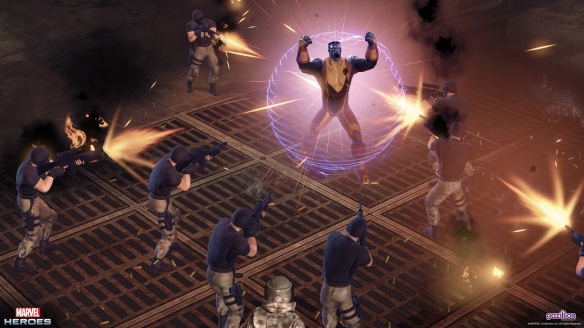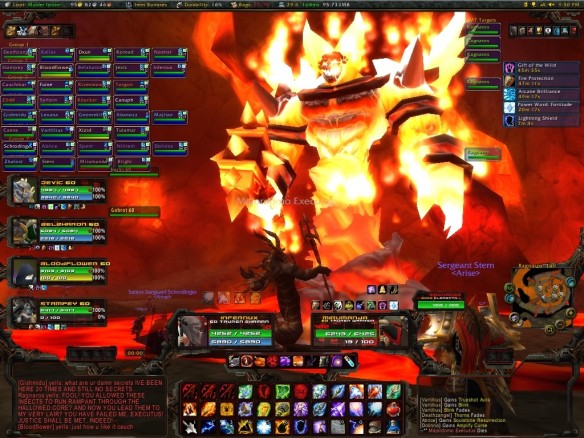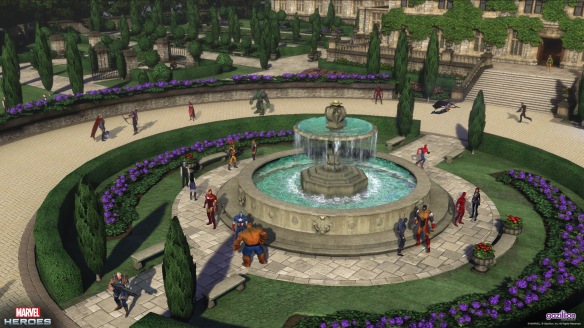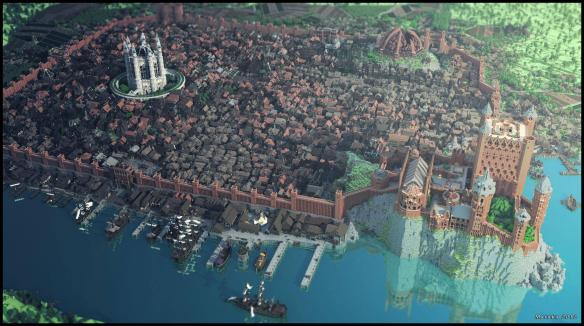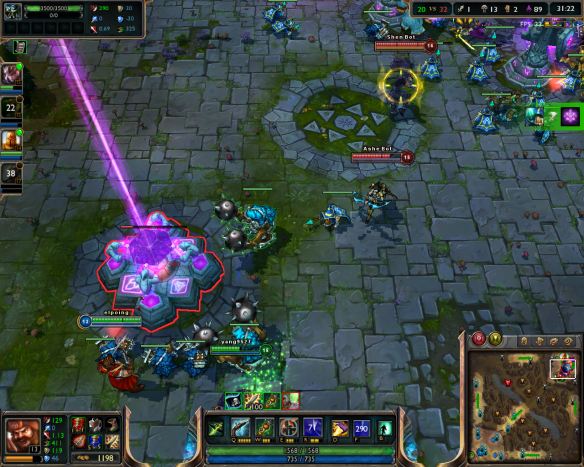Monthly Archives: September 2013
Xipe Totec
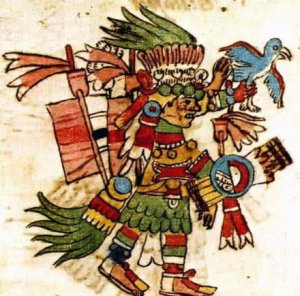
Paper of a kind
Like leather pulled taut
This past we consign
This path you forgot
The stumps of those trees
Stained almost black by
That water that frees
The strings we untie
Oh my heart, lay down
In such sad repose
Dreams mislaid to drown
Embraced by your foes
Taste deeply of lethe
Entwined amity
And foreshortened breath
To this end accede
Flesh now of a kind
Skin folds like paper
This life to unbind
Left in our ardor
Your paper gathered
Like cloth it is laid
His duty conferred
By truths now left flayed
Three C Design in Multiplayer Video Games
The present of anything is a function of its historical antecedents.
This is as much true of modern video games as it is of modern art, modern military tactics, modern politics and modern culture. In the arena of modern video games, the monumental shift over the last twenty or so years away from single player games and towards multiplayer games nevertheless betrays a lot of the early history of single player video games.
Let me be clear about this point – I am emphatically not saying that there is anything wrong or inferior about single player video games.
Even more paradoxically, quite a lot of “multiplayer video games” actually involves solo play; Massively Multiplayer Online Roleplaying Games (MMORPG) such as of World of Warcraft fame are almost famous for this with legions of solitary players happily playing through a multiplayer environment on their own from start to the time they uninstall the game. Probably for the third time.
(This last is actually a great subject on its own, but it’s a different place than where I want to go with this article, so I will put it on the list to come back to at some point in the future.)
What is relevant, however, is that when designing the multiplayer components of a game it can be very useful to consider what I think of as “Three C Design”: Challenge, Cooperation and Competition in the ways in which they are specifically relevant to multiplayer game design.
Multiplayer design thrives when all three of these are present – and before anyone jumps to conclusions, the third C – competition – isn’t (necessarily) what you might think it is.
Challenge
The essence of challenge is that it is not a fixed point, but instead a balance point. Meaning, what is “challenging” to you may be trivially easy (or conversely, brutally hard) to me.
A challenge is fun precisely in that it provides an opportunity to savor a well-earned triumph. Easily blowing through a level or match or map is not terribly satisfying. Similarly, spending three hours trying to figure out a puzzle – and then giving up in frustration – is equally dissatisfying.
From the point of view of a game designer, thus, the goal is to perfectly calibrate the challenge so that it makes the player sweat, but ultimately the player can prevail. But (says the clever listener) how do you calibrate for not just one player, but multiple players?
Some games, honestly, simply abandon the attempt completely, and create a content progression that they expect most players will not, in fact, make it to the end of. The trouble with this approach is that it means that the draw of your game has to be able to survive the fact that most of your players will experience a wall that they – for a selection of reasons, perhaps skill, perhaps logistics, perhaps time – cannot surmount. Hopefully not too many players quit when they hit this point.
One approach to this problem is the escalation model. As I write this, at Gazillion Entertainment I am involved with putting the final touches on a game mode called “X-Defense” where players enter into a map marked by sequential waves of enemies, with each wave becoming progressively harder – and progressively more rewarding.
Because the players know from the outset that their effort will “fail”, the focus is on the actual rewards that are gained through each play, since rewards are granted with each individual wave rather than only upon achieving a specific point in progression.
(Yes, this has some similarities to the above-mentioned static content progression model. The difference is that with this approach you aren’t locking out content and are instead just ratcheting the chance of getting the best rewards – play an escalation model like this long enough, and you can still get the good stuff, but you’ll get the good stuff a lot faster if you play better.)
Another approach to this problem is to introduce auto-correcting game logic. This works by having the game actually track the success of every player in realtime, and then adjust the difficulty dynamically. Did the player just die? No problem, let the player do more damage for a while. Did the player just die again? (n00b) Fine, let the player do even more damage for a time.
(Obviously, this is much easier to implement in single player games, but it does work in instances or in non-competitive multiplayer gameplay.)
But these aren’t the only ways to deal with the problem. There are, in fact, two other major approaches that involve shifting the player’s focus – cooperation and competition.
Cooperation
But there’s another way to skin the proverbial cat, and that is to engineer mechanics that promote and extoll cooperative player behavior.
Note that this is not a replacement for providing a challenging environment as described above, but rather a way of building a second layer on top of the above kind of challenge to moderate the impact of varying player skill, time and resources.
One of my favorite games of all time, Minecraft, is a great example of this. In Minecraft, characters move about a moldable landscape made up of different kinds of blocks with enemies around every corner, especially when the sun goes down. Gameplay centers on gathering resources, building shelters, constructing monuments, making complex gadgets out of constituent blocks.
All of these goals can be pursued as an individual player, from gathering resources to building a literal castle in the sky. And, in fact, at many points in gameplay that is exactly what will happen; if I need to build a boat I simply construct a worktable, chop down a few trees (naturally replanting them – let’s be responsible after all), and make my boat.
But let’s say I succeed at that easily enough and decide I want to go for a bigger challenge. Like, let’s say, building Barad-dur from J.R.R. Tolkien‘s The Lord of the Rings. I decide I want to build it out of appropriately pitch-black material, namely, obsidian. I start making he obsidian. And more obsidian. And even more.
Pretty soon, I am cradling my brain in my lap wondering what in the hell I was thinking of to try this. At this point, I could simply give up. I could also scale back my ambitions. Or – and this is where multiplayer games can really shine in very simple, very emergent ways – I can enlist help. Assuming I possess basic social skills, I might look around in game and try to find someone to help me. Maybe I find someone, but for the sake of argument let’s say I don’t.
Now, I fucking love Minecraft. I push it on adults. I push it on little kids. Sometimes I really do feel (just a little bit) like a drug pusher. But for good. Honest. As with anything one loves – and me in particular – I talk about it. In this case, I talk to my friends, even those who don’t play Minecraft. Maybe I show them what I’m working on, giving them a taste of the dream.
You can see where this is going. I can’t even count the number of friends I have suckered – um, I mean, “inspired” – to pick up Minecraft themselves and play, perhaps first by helping me with my evangelized, insane project to recreate Barad-dur, but later by pursuing their own projects.
Obviously, this works in more competitive games as well. Most modern Player versus Player (PvP) video game todays are not solo ventures but team ventures – it’s you and your mates/compadres/comrades/friends against another team – witness the current popular example of Riot Games‘ League of Legends to see a great implementation of this. While you are, in this case, competing against other players, you’re also – emphatically – at the same time also cooperating with the players on your own team.
Competition
The last component of this way of looking at multiplayer design is in creating challenge and a dynamic feel by placing players in a position to compete.
Most commonly, this can mean competing against other players, but it doesn’t actually have to be. Players might engage in “competitive PvE”, meaning two or more groups of players are struggling to complete a standard game task the fastest, or best in some other manner, and the player or group that does this best “wins”.
Players might also not be competing against each other at all, but against themselves. Games that make it easy for a player to track their own progress can do this all on their own.
Taking the example I mentioned above about the X-Defense game mode in Marvel Heroes, the player progresses through a number of numbered waves, each wave becoming more challenging and more rewarding than the wave before. This provides an implicit way for a player to track their progress, as they recall what is the highest wave they previously attained. Even smarter would be indicating this on, say, the character sheet (Hm, good idea, I should mention that to the User Interface engineers when I get in to work tomorrow) so players are constantly reminded of this.
Basically, it’s taking the old “high score” model of arcade games and implementing it inside an MMORPG.
And, finally, there is of course the traditional PvP component, where players pitted directly against each other provides a sense of challenge, a sense of cooperation, and, finally a very obvious sense of cooperation as well.
Direct player-to-player competition is a whole field in and of itself, with explicit ladder system such as employed by Starcraft II as well as hidden ranking systems used for matching purposes such as utilized in League of Legends.
All of which, of course, is designed to hit the above mentioned balance point where the player is challenged and simultaneously provided with a steady diet of victory – at least enough of the time to feel their time (and money) has been well-spent.
Conclusion
The first “C” of this triad – challenge – is very much a single player trope. What distinguishes it from the multiplayer game design, however, is that multiple players in an environment, to be perfectly frank, screw things up royally and make a mess of intended player experience.
This can be very frustrating, as simple things like cut scenes become unbelievably messier when applied to multiplayer environments, something that often means that it is better simply to cut, or at least severely limit, such features rather than deal with the consequences.
On the other hand, multiplayer games open up some incredible opportunities in the form of the second and third Cs of this triad – cooperation and competition, things that can actually provide solutions to that problem of implementing challenge in a multiplayer environment.
Crunchy and Chewy
Dead, I still like cars –
Crunchy on the outside with
Meat on the inside
Working Stiff
So simple before
Now trapped in this fiendish maze
Of endless cube farm

